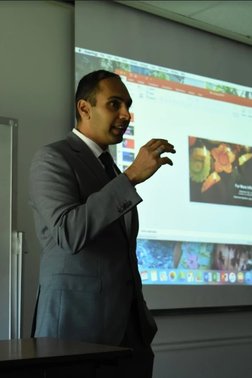Diversity and inclusion training aren’t enough: Institutions need long-term strategies
Over the last few months, I’ve had productive conversations with a number of Fortune 500 companies about implementing a strong culture of inclusion in their workplace, as well as outreach to diverse communities.
However, the companies are usually fixated on hot buzzwords like unconscious bias and looking at ways to incorporate professional development in the form of trainings. Their belief is that diversity and inclusion can be institutionalized through workshops and lectures.
Don’t get me wrong: professional trainings are important, especially those that help institutions and their employees better understand and address their own biases and other obstacles towards inclusivity. However, those trainings should be viewed more as complementary outputs rather than outcomes in building a diverse institutional culture.
This is why strategic diversity planning is so important to developing a sustainable culture of inclusion. Companies have to not only understand what the areas of improvement are now, but what they could be in five, or even 10 years.
Just five years ago, the majority of companies did not have unconscious bias as part of their lexicon. Now, major corporations such as Starbucks are being forced to address allegations of racism by providing employee diversity and inclusion trainings. However, when diversity and inclusion trainings are done reactively, they can have little effect on the long-term culture of inclusion at institutions. More problematically, they can lead to resistance and resentment among some stakeholders.
This is why I’ve been advising institutions that their diversity and inclusion efforts should include the development of a long-term strategy that is sincere, proactive and welcoming of all voices in the planning. The last part is important, as I believe institutions too often try to implement programs without any feedback from a multitude of voices. As a result, their efforts seem hamfisted or perceived as insincerely appeasing. This is exactly what happened when Pepsi, in a misguided effort to pay homage to Black Lives Matter, aired an incredibly tone-def and racially insensitive commercial featuring model Kendall Jenner.
Developing a long term diversity and inclusion strategy can involve its share of hiccups, but it can transform an institution’s culture for the better in a sustainable manner. If institutions are already focused on the long term, than the diversity and inclusion blueprint should be naturally integrated into that focus.


Recent Comments